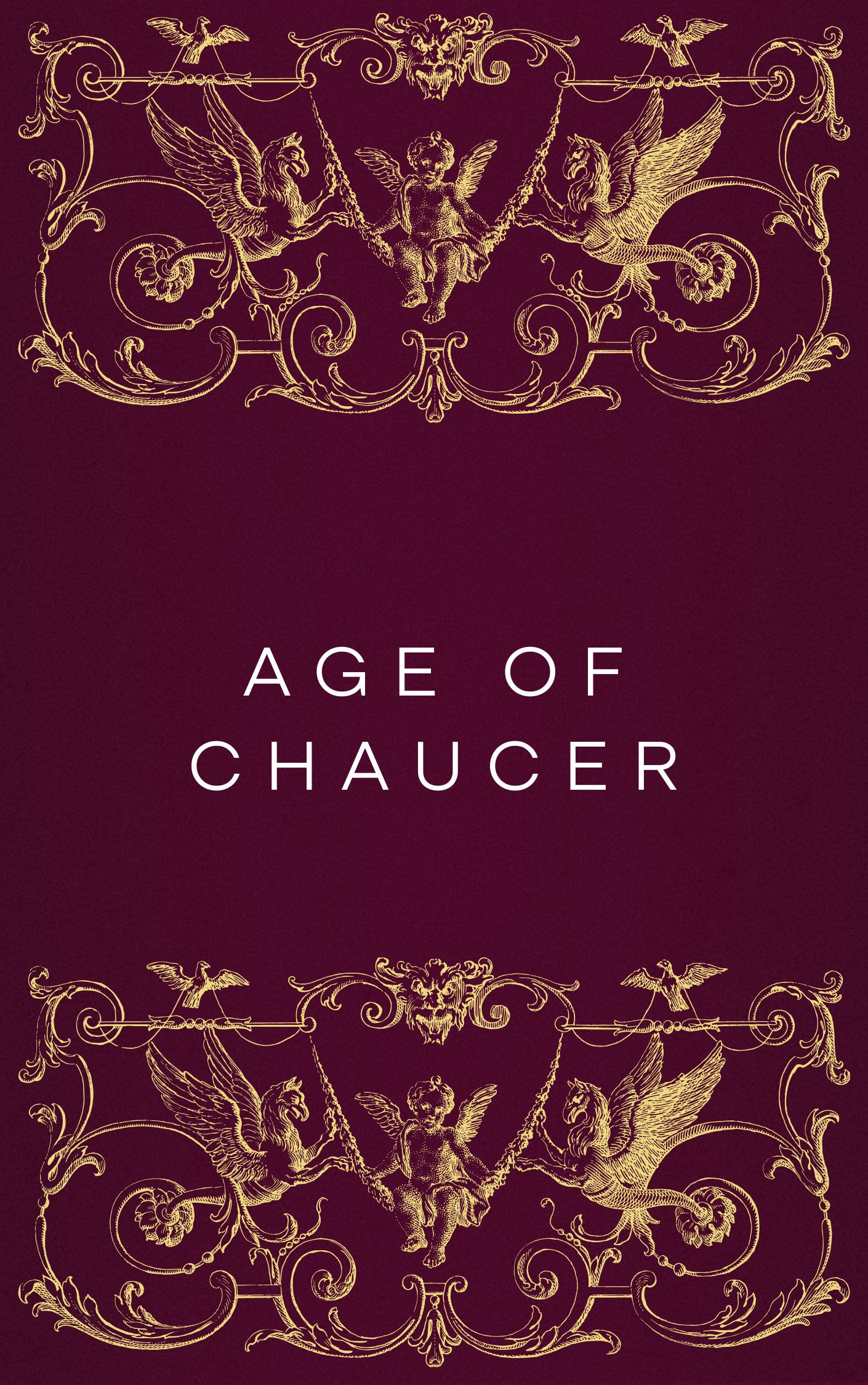The Age of Chaucer: A Literary Renaissance
The 14th century, often referred to as the Age of Chaucer, was a period of significant transformation in English literature. This era, spanning the reign of Edward III to the early years of Henry IV, witnessed the emergence of a distinct literary voice that would shape the course of English writing for centuries to come.
The 14th century, often referred to as the Age of Chaucer, stands as a pivotal era in the evolution of English literature.
This period, spanning the reign of Edward III to the early years of Henry IV, witnessed a remarkable transformation in English writing, laying the groundwork for the literary flourishing that would characterize the Renaissance. While the Black Death cast a long shadow, bringing societal upheaval and economic disruption, it also spurred a re-evaluation of traditional values and a burgeoning sense of individual identity. This era witnessed the rise of a vibrant merchant class, the growth of towns and cities, and the development of a more diverse and dynamic social landscape. Against this backdrop of change, Geoffrey Chaucer emerged as a literary luminary, capturing the spirit of his age with unparalleled artistry. His masterpiece, The Canterbury Tales, offers a captivating tapestry of medieval English society, exploring themes of love, morality, religion, and social satire with a keen observational eye and a masterful command of language. Chaucer’s innovative use of rhyme and meter, combined with his vivid portrayal of human nature, established him as a cornerstone of English poetry, shaping the course of literary expression for generations to come.
A Tapestry of Change
The Age of Chaucer was a time of profound social, political, and cultural change. The Black Death, a devastating pandemic that swept across Europe, had a profound impact on English society, leading to significant demographic shifts and social unrest. This period also saw the rise of a burgeoning merchant class and the growth of towns and cities, contributing to a more diverse and dynamic social landscape.
Politically, the Hundred Years’ War with France dominated much of the 14th century, shaping national identity and fostering a sense of English patriotism. Religious tensions also simmered, with the rise of Lollardy, a religious reform movement that challenged the authority of the Catholic Church.
Chaucer: A Voice of His Time
Amidst this backdrop of change, Geoffrey Chaucer emerged as a literary luminary, capturing the spirit of his age with unparalleled artistry. His most celebrated work, The Canterbury Tales, is a collection of stories told by a diverse group of pilgrims on a journey to Canterbury Cathedral. Through these tales, Chaucer offers a vivid and insightful portrayal of medieval English society, exploring themes of love, morality, religion, and social satire.
Chaucer’s mastery of language and storytelling is evident in his use of Middle English, a language that was still evolving and gaining literary prestige. His innovative use of rhyme and meter, combined with his keen observation of human nature, established him as a master of poetic craft.
A Legacy of Influence
Chaucer’s influence on English literature is undeniable. His works served as a model for subsequent generations of writers, inspiring them to explore the richness and diversity of the English language. His legacy can be seen in the works of later poets such as William Shakespeare and Geoffrey Chaucer, who drew inspiration from his innovative use of language and storytelling techniques.
The Age of Chaucer was a pivotal moment in the history of English literature. It marked a transition from the medieval to the early modern period, laying the foundation for the literary flourishing that would characterize the Renaissance. Chaucer’s enduring legacy serves as a testament to the power of literature to capture the spirit of an age and to inspire generations of readers and writers.
Geoffrey Chaucer’s influence on English literature is profound and multifaceted. He is often hailed as the “father of English literature” for his significant contributions to the development and prestige of the English language as a literary medium.
Chaucer’s mastery of language is undeniable. He skillfully employed Middle English, a language still evolving and gaining literary prestige, demonstrating a remarkable command of its nuances and expressive potential. His innovative use of rhyme and meter, combined with his keen observation of human nature, established him as a master of poetic craft and a significant influence on subsequent generations of English poets.
Chaucer’s works, particularly The Canterbury Tales, served as a model for subsequent generations of writers, inspiring them to explore the richness and diversity of the English language. His legacy can be seen in the works of later poets such as William Shakespeare and Geoffrey Chaucer, who drew inspiration from his innovative use of language and storytelling techniques.
Furthermore, The Canterbury Tales established a new level of realism and social commentary in English literature. Chaucer’s vivid portrayal of diverse characters from all walks of life, from the noble Knight to the lowly Miller, offered a window into the complexities of medieval English society. This emphasis on social observation and character development had a profound impact on the development of the English novel.
In conclusion, Geoffrey Chaucer’s influence on English literature is undeniable. His mastery of language, his innovative storytelling techniques, and his insightful portrayal of human nature continue to inspire and influence writers centuries after his death. He remains a towering figure in the history of English literature, shaping the course of literary expression for generations to come.
Chaucer's works
Geoffrey Chaucer, a pivotal figure in English literature, left behind a rich and diverse body of work that continues to captivate readers centuries after his death. His writings offer a fascinating window into medieval English society, exploring themes of love, morality, religion, and social satire with a keen observational eye and a masterful command of language.
One of Chaucer’s most celebrated works is undoubtedly The Canterbury Tales, a collection of stories told by a diverse group of pilgrims on a journey to Canterbury Cathedral. This masterpiece showcases Chaucer’s remarkable ability to create vivid and relatable characters, from the worldly Knight to the bawdy Miller. Through their tales, Chaucer provides a social commentary on the complexities of human nature, exploring the spectrum of human experience with humor, irony, and poignant realism.
Beyond The Canterbury Tales, Chaucer’s literary output is equally impressive. Troilus and Criseyde, a tragic romance inspired by Boccaccio’s Filostrato, delves into the complexities of love and betrayal with psychological depth and emotional resonance. The House of Fame, a dream vision poem, explores themes of fame, fortune, and the nature of reality, while The Parliament of Fowls offers a charming allegorical exploration of love and courtship.
Chaucer’s mastery of language is evident throughout his works. He skillfully employed Middle English, a language still evolving and gaining literary prestige, demonstrating a remarkable command of its nuances and expressive potential. His innovative use of rhyme and meter, combined with his keen observation of human nature, established him as a master of poetic craft and a significant influence on subsequent generations of English poets.
In conclusion, Geoffrey Chaucer’s works stand as a testament to his enduring literary genius. His insightful observations, masterful storytelling, and innovative use of language continue to resonate with readers today, making him one of the most important figures in the history of English literature
Contemporary Writers of Geoffrey Chaucer
Geoffrey Chaucer’s contemporaries were a vibrant group of writers who shaped the literary landscape of late 14th-century England. While Chaucer stands out as a towering figure, his contemporaries offer valuable insights into the diverse literary currents of the time.
John Gower, a close friend of Chaucer, is perhaps the most prominent among them. Gower’s works, written in French, Latin, and English, reflect the multilingual nature of the era. His major work, Confessio Amantis (The Lover’s Confession), is a long poem that explores themes of love, morality, and social order. Gower’s style, while distinct from Chaucer’s, also demonstrates a keen awareness of contemporary social and political issues.
William Langland, author of Piers Plowman, provides a contrasting perspective. Written in the alliterative verse tradition, Piers Plowman offers a powerful social and religious critique of 14th-century England. Langland’s work delves into issues of poverty, corruption, and the role of the Church, offering a more socially conscious and sometimes more critical view of the era than Chaucer.
Other notable figures include John Wycliffe, a religious reformer who translated the Bible into English, and Julian of Norwich, a mystic whose Revelations of Divine Love offers profound insights into Christian spirituality. These writers, along with many others, contributed to a rich and diverse literary scene in 14th-century England, shaping the course of English literature in the centuries to come.
The works of Chaucer’s contemporaries offer valuable insights into the social, political, and religious currents of the time. By exploring the writings of these figures, we can gain a deeper understanding of the complex and multifaceted world in which Chaucer lived and wrote.

